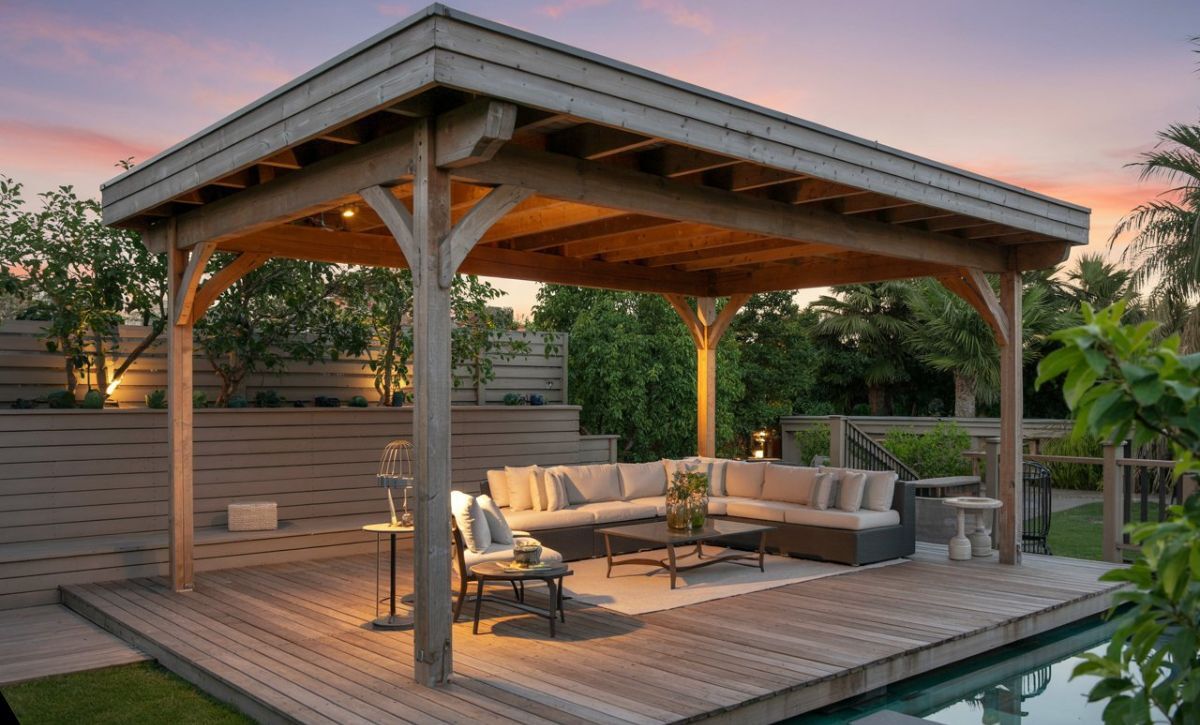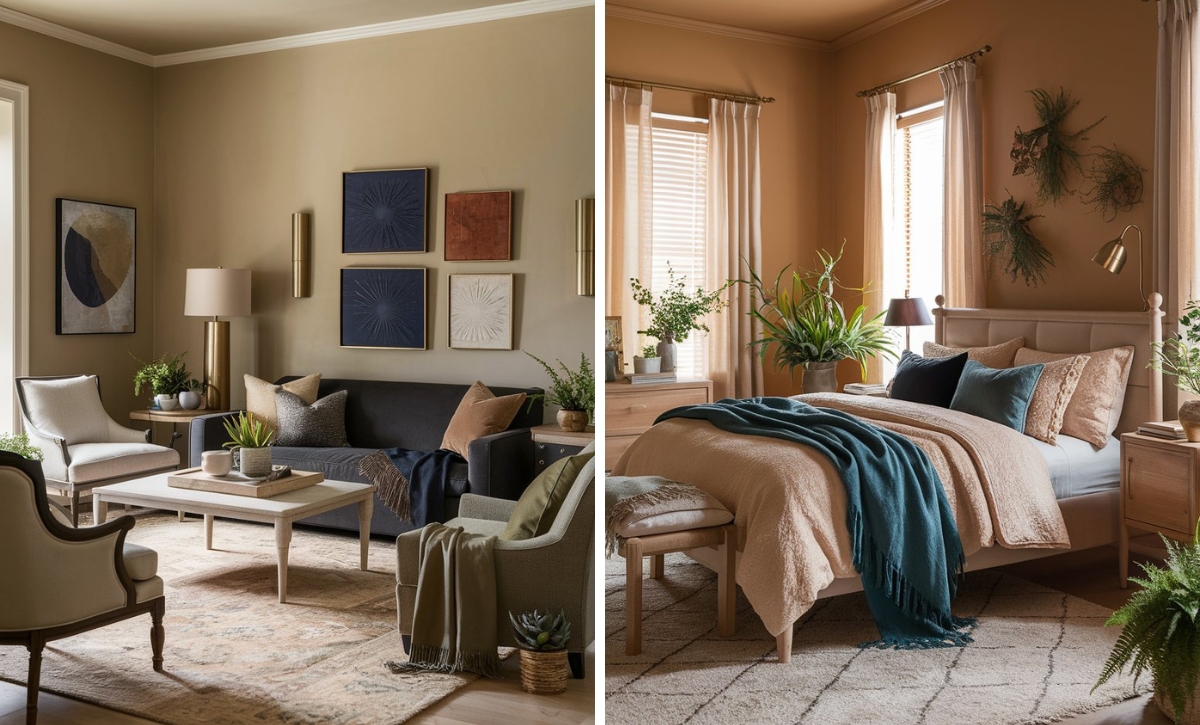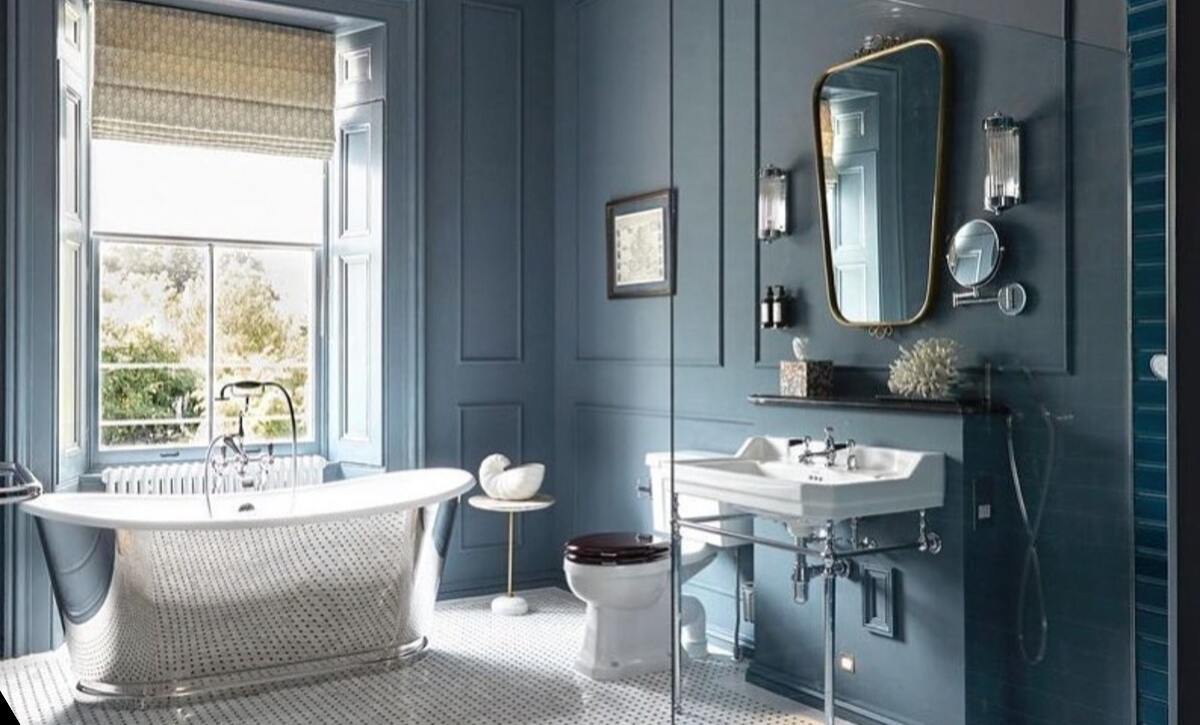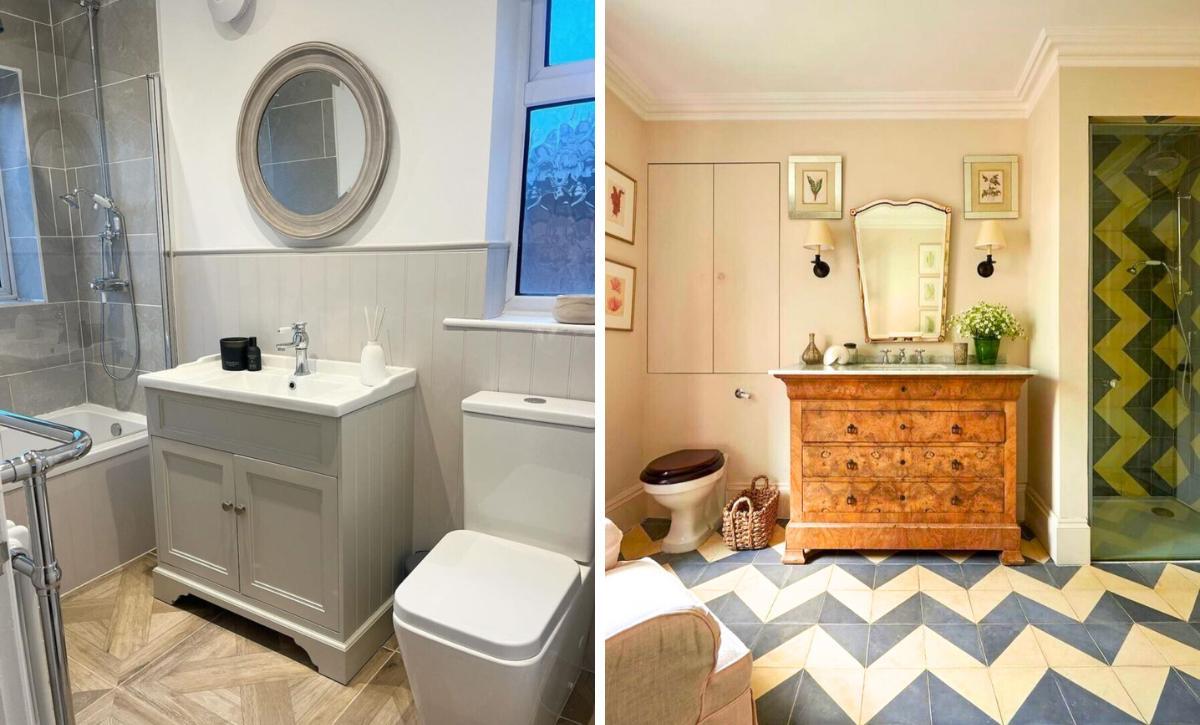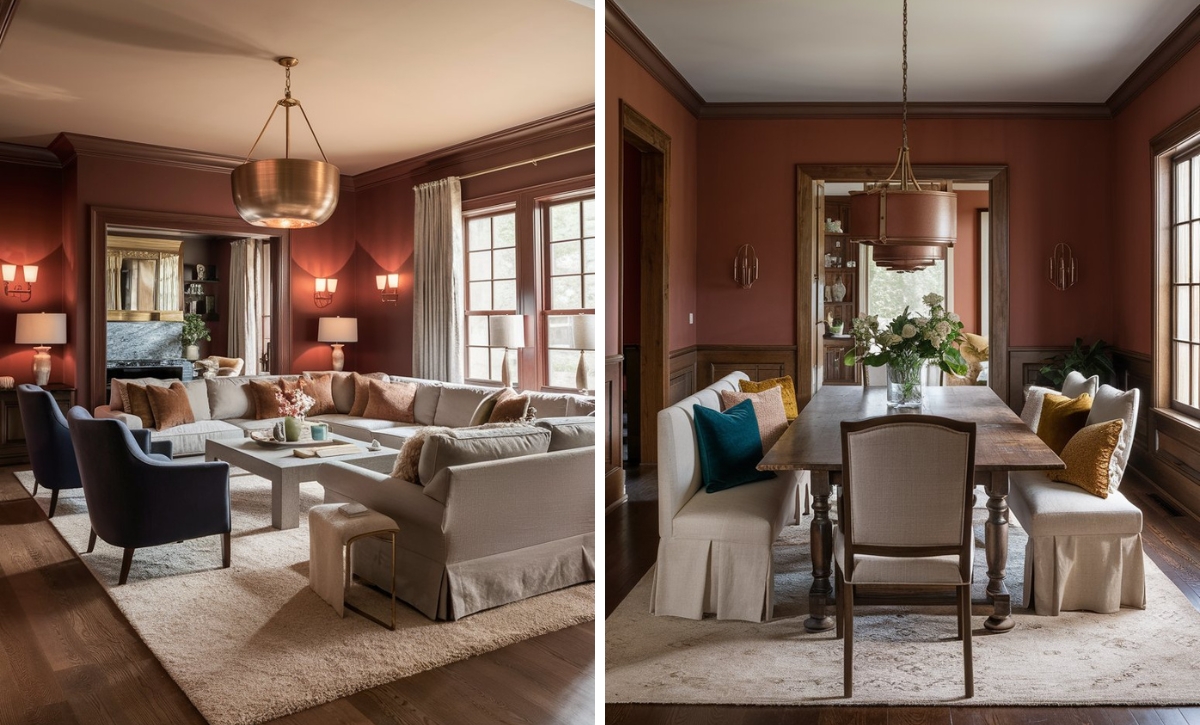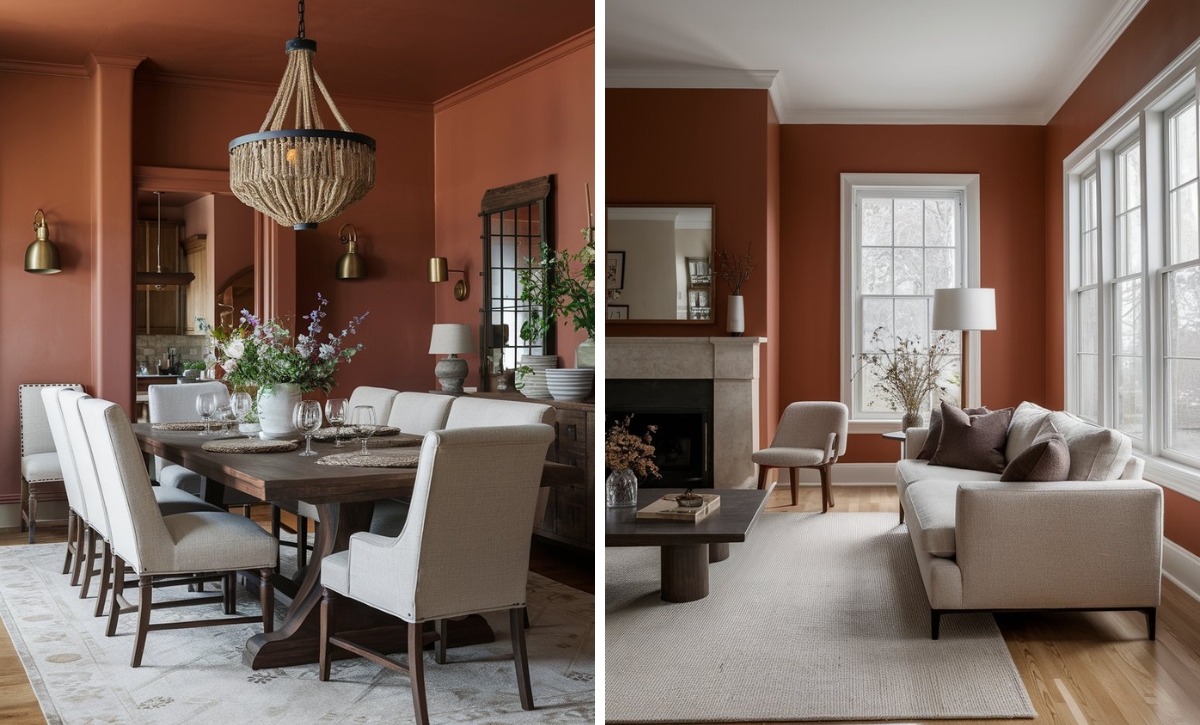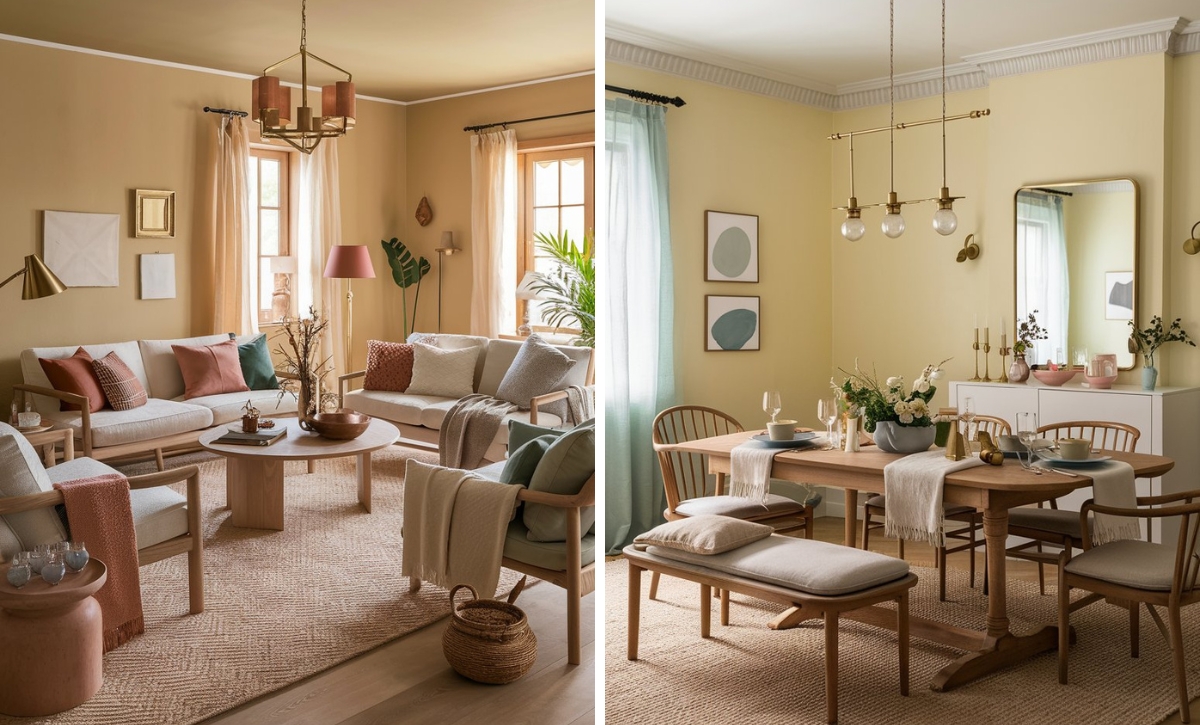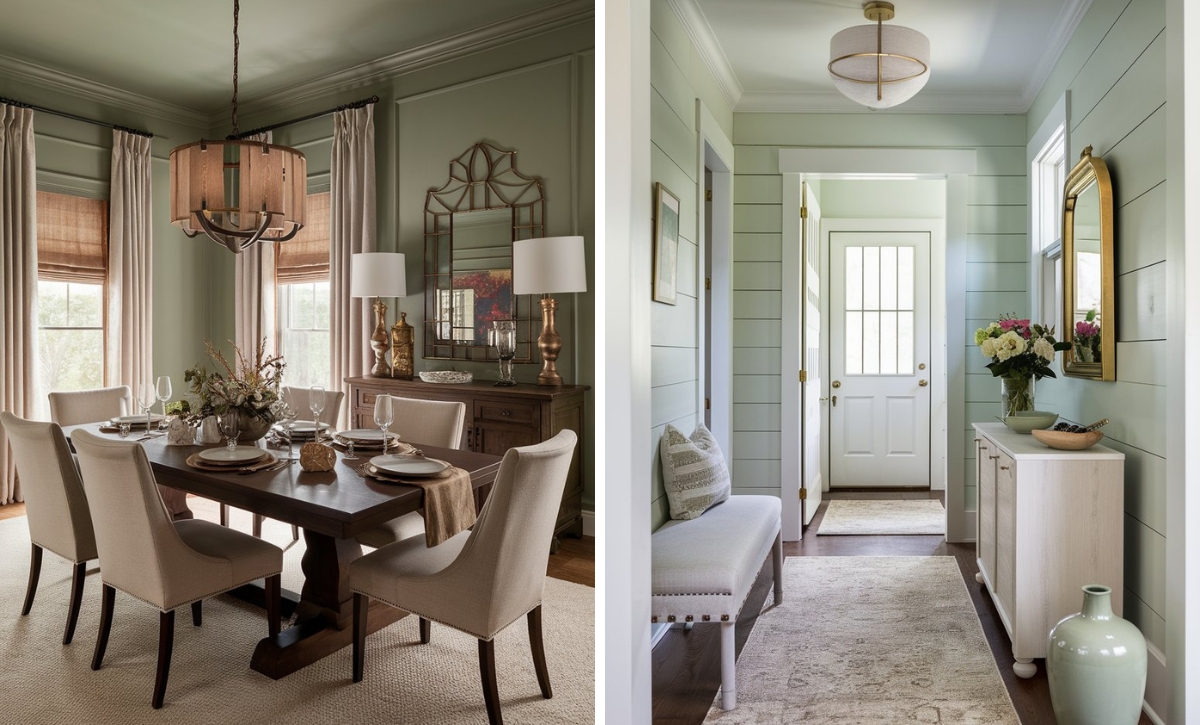Bathroom walls aren’t the typical walls that you’ll find in other parts of your home. Any wall covering will work in hallways, bedrooms, living rooms, and other dry areas.
Water comes from all directions in bathrooms, and moisture from the shower, overspray, tub, and moisture-laden air is often detrimental to bathroom walls. Even though you can use bathroom vents to alleviate these issues, well-vented bathrooms still receive moisture problems.
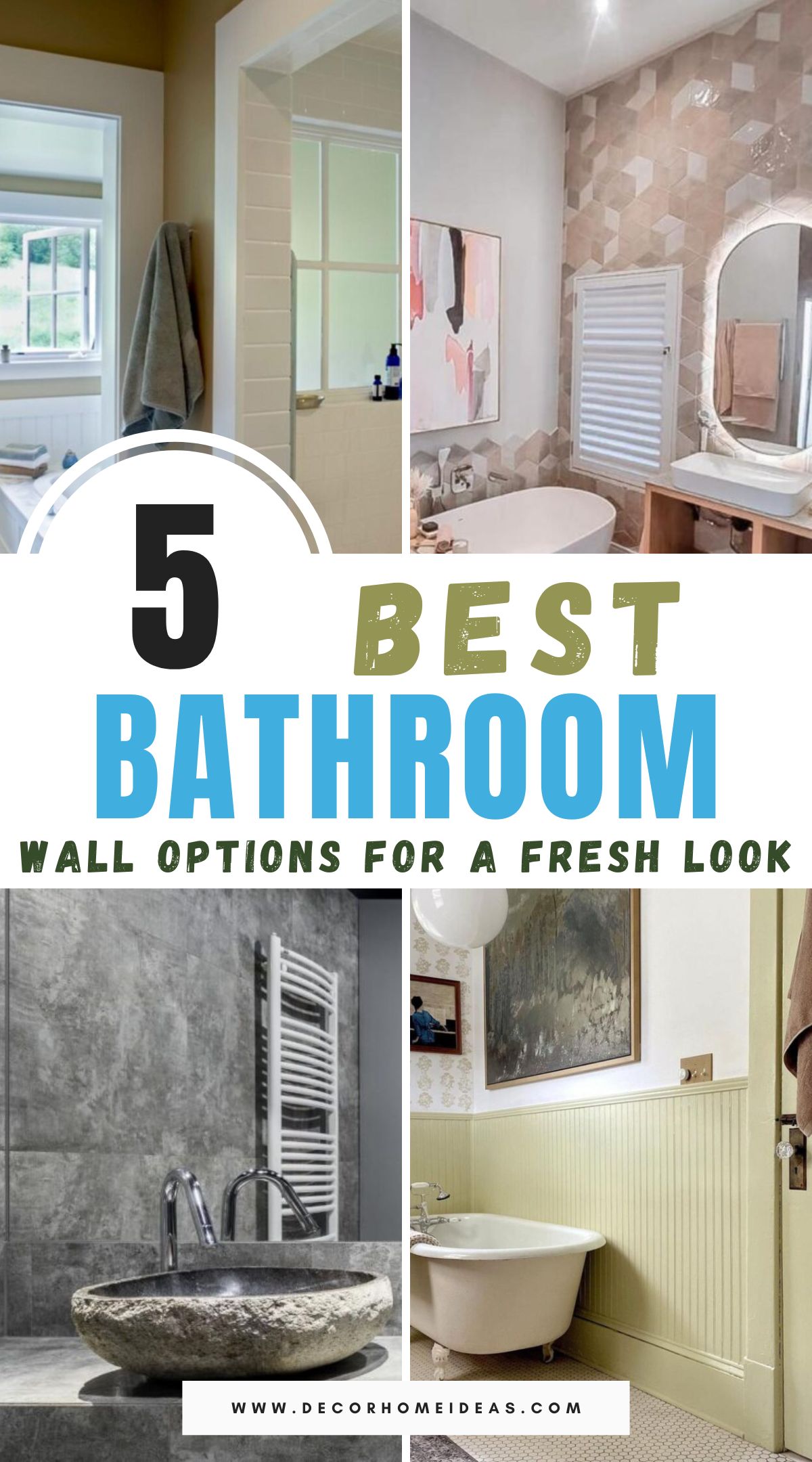
Today, we’ll look at the best bathroom wall alternatives that will help you with your moisture problems.
Take a look!
Bathroom Wall Surfaces
| Surface | Pros | Cons |
| Tile | Tile is 100% waterproof as long as it’s expertly installed. | Too much tile can overwhelm a space and make it feel barren. |
| Interior paint | Designated bathroom paint has mildew-and-mold-inhibiting additives. | Choosing designated bathroom paint will cost you twice as much as regular interior paint. |
| Vinyl wallpaper | Easy to install since it can be unpeeled and reapplied more than once. | Some vinyl wallpaper isn’t suited for heavy moisture. |
| Tileboard | Tileboard can be a quick fix for bad drywall in a bathroom or kitchen. | Medium-density fiberboard (MDF) with a hard melamine layer on top is a poor substitute for real tile. |
| Beadboard | Beadboard protects walls against direct moisture from the bathtub or shower. | The beadboard’s traditional look may not suit all bathroom styles. |
The Best Materials for Bathroom Walls
The bathroom is always a top priority, whether you’re tackling a new build or remodeling your bathroom. Consider the daily wear and tear on a bathroom when choosing the best material for your bathroom walls.
An ideal bathroom wall material should stand up to moisture and humidity and can easily be cleaned and wiped down. Water-resistant properties are critical.
Glass or Ceramic Tile
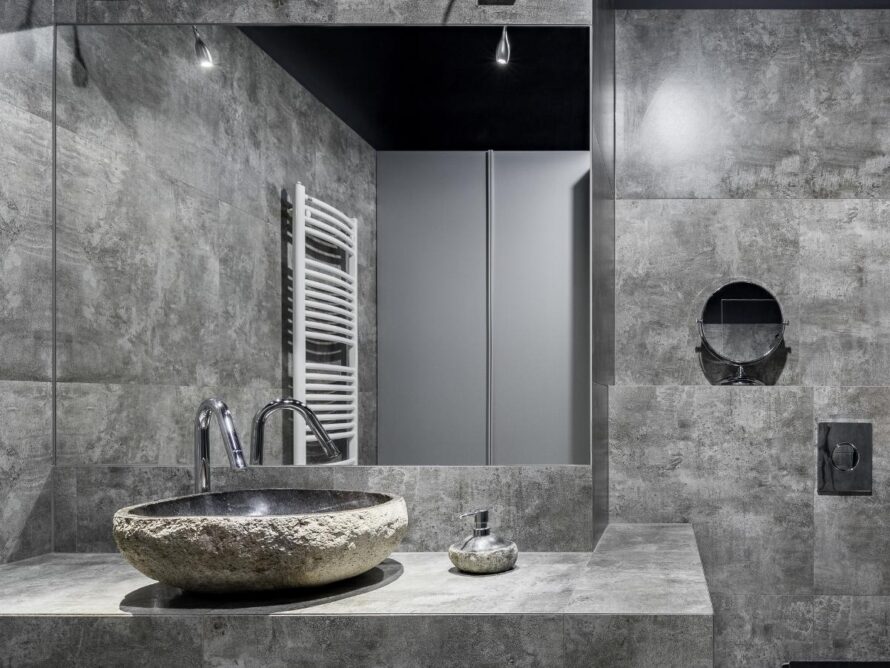
Tile has been used for standing-water surfaces like pools and bathtubs for the longest time, dating back to the ancient Roman days. Ceramic tile is a popular choice for most bathroom walls. Moisture will never be an issue as long as you apply your tile properly.
Design is your top consideration with tile. All tile has grout (lines), and grout is used to create interesting patterns, which can either elevate or deviate from your bathroom’s look.
Too many tiles can make a room feel sterile, weighty, busy, and even depressing. Tiling the wall partially is a good alternative. When using ceramic tile as a wainscot, you’ll have to stop at a certain point, which is usually at least 36 inches.
Regular Interior Paint or Semi-Gloss Bathroom
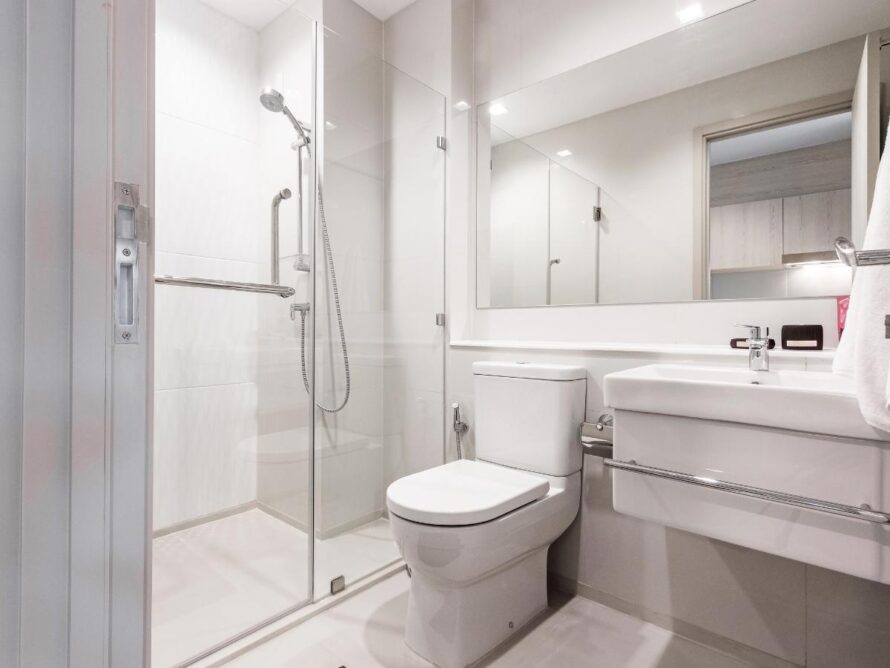
Bathroom paint is normal interior paint; it only has properties that make it ideal for bathrooms. The main thing to avoid with regular interior paint is getting matte or flat surface paint since the paint’s pores trap water.
Using semi-gloss or a high gloss sheen is an excellent way to avoid this; water drips on these surfaces. However, you can have desirable flatter sheens in your bathroom using premium paints with mold-killing additives.
Paint is a cheap alternative compared to other bathroom wall surfaces. Semi-gloss or eggshell interior paint is inexpensive. Also, designated bathroom paint is far cheaper than using tile, wallpaper, or other hard surfaces, and, remember, designated paint can cost up to twice the amount of regular acrylic-latex interior paint.
Vinyl Wallpaper
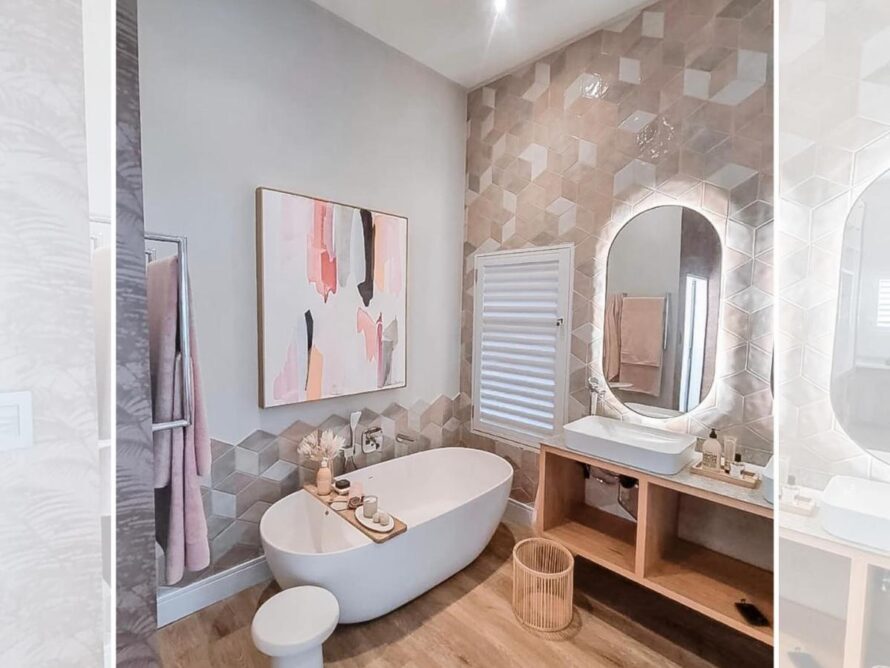
In terms of functionality, vinyl-coated wallpaper is one of the better options for bathroom walls (all-paper coverings degrade in a moist environment). Most people think of hotels when it comes to vinyl wallpaper, but the designs have evolved into elegant styles over time.
Ensure your current wall surface can accept peelable vinyl wallpaper. Peelable vinyl wallpaper doesn’t stick to rough, flat, or matte surfaces since it’s less sticky than permanent wallpaper. Additionally, vinyl wallpaper is ideal for indirect, ambient moisture.
It would be best to use vinyl wallpaper with a surface that covers the lower section of the walls. Nonetheless, some vinyl wallpapers will withstand direct contact with water, like in a shower stall.
One advantage of vinyl wallpaper is that you can experiment with it before applying it to your walls. Buy one roll or a sample and try it out on your walls.
Large-patterned wallpaper visually reduces your bathroom’s size. Horizontal patterns seem to widen a room, and vertical ones draw the eye upward, making a room feel taller.
Tileboard
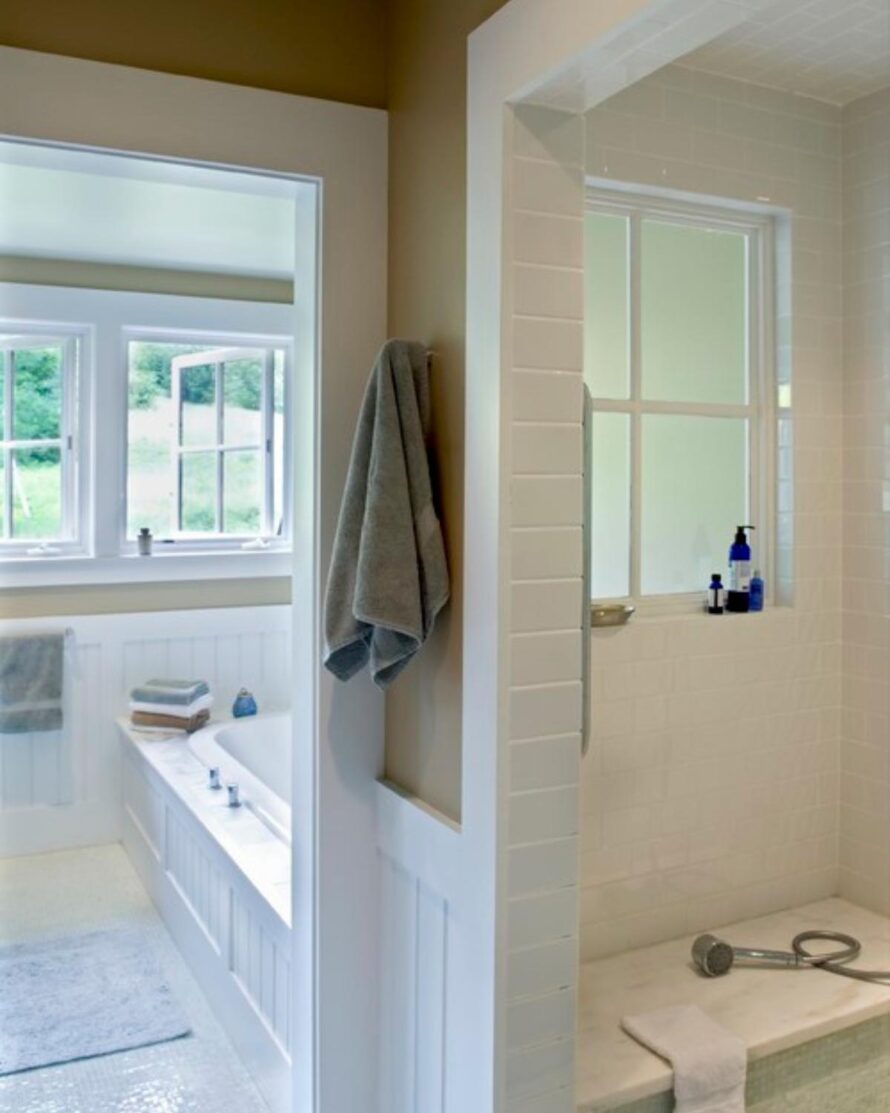
Tileboard resembles ceramic tile at first glance and typically comes in large format panels such that you can install 32 square feet of wall covering in just a few minutes; it nominally looks like tile.
Good tileboard has a coated wear surface, meaning it repels moisture and looks closer to real ceramic. Tileboard is cheap and easy to install and ideal for a basement or guest bathroom because of its economical appearance. Tileboard adds little long-term value to your home, but it’s a cheap material that will fix your wall problems quickly.
One disadvantage of tileboard is that it quickly swells up and won’t recover its original measurements if water reaches its back. You can avoid this issue by caulking all edges and seams with bathroom-grade silicone caulk.
Beadboard
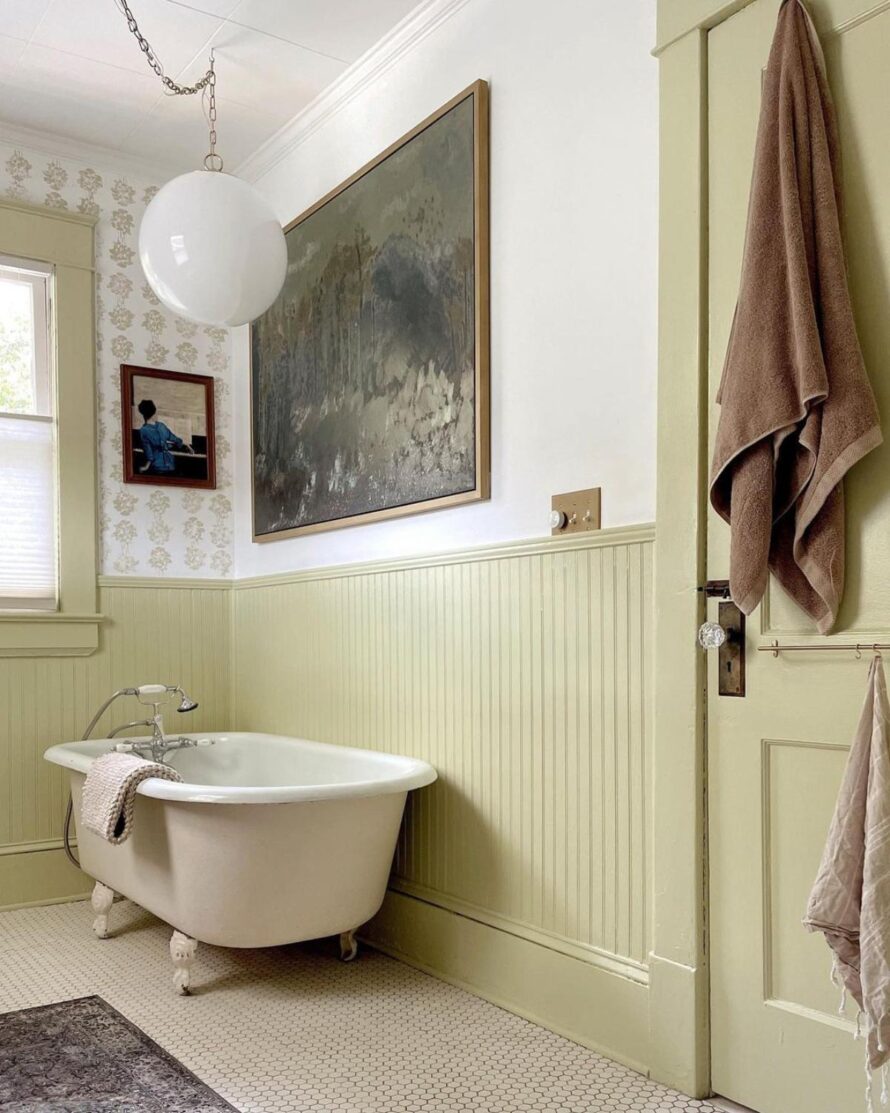
Beadboard only covers the lower half of your wall, albeit this is the most critical portion when it comes to moisture issues. You can paint the beadboard with glossy or semi-gloss paint to protect the lower portions of the walls against moisture.
Purchase beadboard panels that are 4 ft high and 8 ft long for easier installation. These long boards lay down quickly when installed lengthwise with construction glue and finish nails. Select individual beadboard planks for a more historically accurate and refined look.
Beadboards are well-known for giving a room that classic look, but this can be an advantage or disadvantage. Beadboard is ungainly and out of place in modern bathrooms, but for traditionally styled ones, it fits right in.
Maintaining Bathroom Walls
Keeping your bathroom clean is part of its regular maintenance, regardless of the material used on the walls. Wipe them down consistently to avoid hair and dust accumulation, especially in very humid bathrooms.
Remember to clean them when deep cleaning your bathroom, and use a cleaning agent that won’t affect your specific wall material and prevents mold from growing.
Commonly Asked Questions
What is the cheapest option for bathroom walls?
Painting your walls is the cheapest option! Go for a semi-gloss paint for a finish that’s easy to clean and tolerates moisture.
What is the best material for bathroom walls?
Experts agree glass, ceramic, or porcelain tile are the best materials for bathroom walls, even though a few water-resistant options will hold up in a bathroom.
What sheeting is best for bathroom walls?
For a durable, cost-effective alternative, use acrylic sheeting on your bathroom walls.

